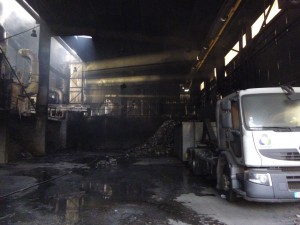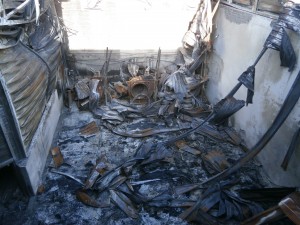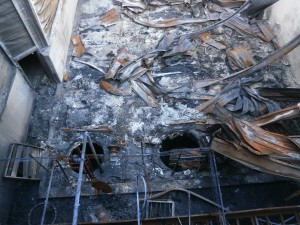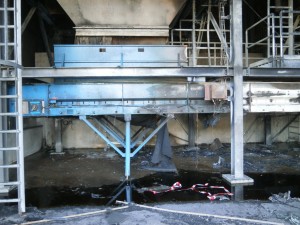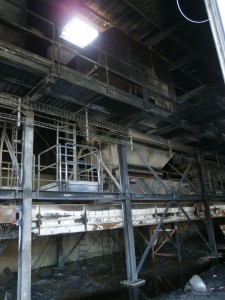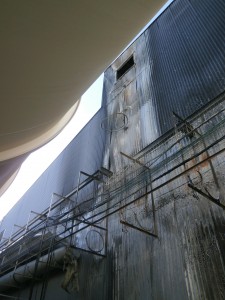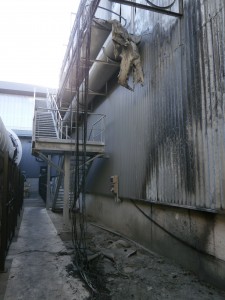At around 3:05 a.m., in the organic waste recovery unit (sorting, methanization, composting) of a waste treatment centre, a fire broke out in the household waste sorting and air treatment areas (4,700 m² buildings located upstream of the methanization area). The fire detection system was triggered, and the security guard went to the scene and alerted the emergency rescue services. Firefighters were able to protect the methanizer and the gasometer.
The fire was extinguished at around 07:50 p.m. During the excavation operations, residual fires are discovered in the biofilters. The firefighters also encountered difficulties in removing the filter linings in order to gain access to the heart of the fire. They were able to flood the equipment from above. They were able to finally bring the fire under control with foam the next day at around 11:45 a.m. The site was then monitored for the next 2 days.
Consequences and actions taken
During the firefighting intervention, the extinguishing water was reused in a closed circuit in addition to the firefighting reserves (tanks) and the fire hydrant. The 3,000 m³ of water was confined and then transferred by tanker truck to an industrial wastewater treatment plant.
The buildings housing air handling unit and the mechanical equipment for sorting household waste had to be dismantled and completely rebuilt. This work was expected to take more than a year. Some of the employees were laid off, and the influx of household waste to the site was redirected to other treatment facilities. The networks and equipment for the treatment and recovery of biogas were flushed with nitrogen. The biogas equipment was eventually mothballed.
The waste and organic matter being processed at the site were transferred to other treatment facilities.
The wood sorting and transfer activities, not affected by the fire, were maintained in operation.
Causal analysis
The day before the fire broke out, the last operations and maintenance workers had left the site at about 8 p.m. During his last round, at around 2:30 a.m., the security guard did not detect anything.
Early on, the video surveillance showed smoke escaping from the drying/composting tunnels and flames in the air handling unit.
According to the operator, an electrical problem was responsible for the fire. The fire allegedly broke out in the main services duct behind the drying/composting tunnels. A technical expert was able to identify the source of the fire to a faulty fan.
The flames apparently then spread through the polypropylene ventilation ducts and electrical cables.
Feedback and measures taken
The organic waste recovery unit was commissioned in April 2014.
In 2015, three outbreaks of fire were reported (trash bins and drying/composting tunnel) but were quickly brought under control. These incidents led the operator to implement additional risk control measures: surveillance rounds by the security guard, and the installation of thermal imaging cameras in high-risk areas.
The operator was required to update its hazard study by incorporating the lessons learnt from this most recent event. The resumption of operations at the organic waste recovery unit was subject to the implementation of preventive and corrective measures.
In particular, the operator has planned to:
- improve the site’s fire detection capabilities:
- install thermal imaging cameras to identify hot spots;
- installation of smoke detection systems in the ventilation ducts;
- technical staff present 24 hours a day.
- limit the spread of fire, with the installation of the following elements:
- non-combustible ventilation duct sections at building penetrations;
- fire dampers on ventilation ducts;
- sections of electrical cable with an intumescent coating;
- non-combustible conveyor belts at building penetrations.
- improvement of fire extinguishing capabilities:
- installation of fire suppression networks in inaccessible areas (biofilters);
- a fire safety study to identify technical and organisational solutions.




